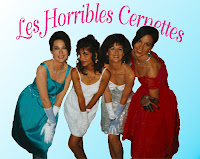Michael Barone wrote an insightful article about the differences between the campaigns in Bush vs. Kerry. His thesis is that the Bush team prevailed partly by employing a brand-new, cutting-edge kind of political organization. In particular, it was one that reflects the changes over the past few decades in America. In the middle of the article, Mr. Barone says:
This is not command-and-control management, but management by networking, by holding people accountable and letting them learn from each other how to do better. And in post-industrial America, it got better results than command-and-control management. In crucial states with the largest volunteer organizations, the numbers speak as loud as Giuliani's — turnout rose 28 percent from 2000 in fast-growing Florida and 20 percent in slow-growing Ohio.
The Bush campaign used connections — networks — to recruit volunteers and identify voters. The campaign built on existing connections — religious, occupational, voluntary — to establish contacts. If a Bush volunteer was a Hispanic accountant active in the Boy Scouts, the campaign would reach out through him to other Hispanics, accountants and their clients, and Boy Scout volunteers. Of course, the campaign put much effort into contacting people in religious groups — particularly evangelical Christians, but also Catholics and Orthodox Jews. And the Bush campaign reached out to people with shared affinities who tend to be Republicans. The campaign consulting firms National Media and TargetPoint identified Republican-leaning groups — Coors beer and bourbon drinkers, college football TV viewers, Fox News viewers, people with caller ID — and devised ways to connect with them.
An interesting insight, and one that resonates strongly with me. I work for a small company (about 100 people) whose employees and contractors are scattered all about the globe, from Australia to Estonia. We are exactly the kind of "networked" company Mr. Barone is talking about, and that the Bush campaign emulated. Modern technology and modern social customs enabled this, and the Bush team leveraged it to the hilt. By contrast, the Democratic team was organized in a more traditional and hierarchical fashion Ᾱ which Mr. Barone contends was a significant part of their downfall.
Take the time to read the whole article; it's a good one...

